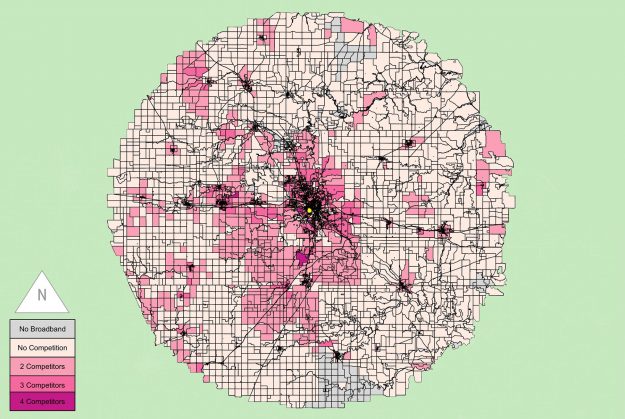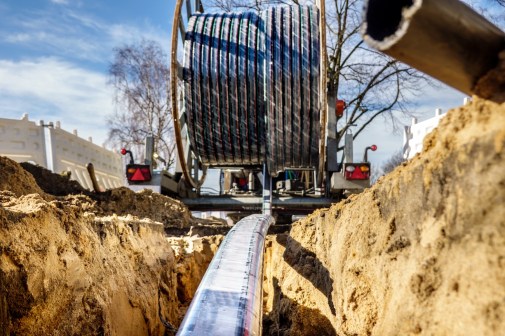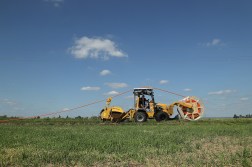National broadband coverage grossly over-represented by FCC data, report says

Availability of high speed internet is much less prevalent than what’s represented by federal statistics and the country’s telecommunications companies, according to a report released Wednesday by an advocacy group.
In a report published by the nonprofit the Institute for Local Self-Reliance, researchers use the city of Rochester, Minnesota, to illustrate their argument that the Federal Communications Commission’s methods of collecting and publishing data on broadband availability are propping up regional monopolies and duopolies at the expense of consumers.
Christopher Mitchell, director of the group’s broadband initiative and co-author of the report, told StateScoop the same story can be found in communities across the country, not just in the city of 114,000 residents in southeastern Minnesota.
“The main takeaway is that some elected leaders have been fooled by aggregate statistics in broadband deployment,” Mitchell said. “We did the paper to demonstrate how statistics can be abused.”
Federal statistics cited in the report indicate that there are 19 broadband providers in Rochester, a number that would indicate a high level of market competition. But researchers found that not a single location has access to 19 providers, and in a majority of the city’s geography, there is no competition at all.
The report shows that about 19,000 Rochester residents only have access to broadband services through Charter Communications, and about 42,000 people don’t have access to a wireline broadband provider at all. According to the FCC, everyone in Rochester has broadband access because the agency lumps in slower, more expensive wireless services with wireline providers.
As huge gaps in broadband availability have persisted in Rochester, FCC statistics have provided politicians with misinformation, the researchers said. The local government basically gets a “convenient excuse” not to act, Mitchell said.
The main offender is the FCC’s broadband availability collection process, according to the researchers. Every six months, internet service providers are required to submit a document called Form 477 to the agency, showing where they provide service, census block by census block. But census blocks can be big, particularly in rural areas, and the FCC defines access in a way that does not reflect reality for most consumers, the researchers said.
If, for example, just one household has access to Comcast internet service within a given census block, and just one other household has access to CenturyLink in that same census block, then statistically all households in that census block are defined as having access to two broadband providers, even if the truth is that they don’t have access to any providers at all.
‘Incentives to overstate their coverage’
Large telecommunications companies are taking advantage of this system, the researchers said.
“Large, de facto monopoly providers have incentives to overstate their coverage and territory to hide the unreliable and slow nature of their service in many communities,” according to the report.
The telecoms frequently cite FCC coverage statistics as a defense against claims of monopoly. In May, USTelecom — a trade association backed by companies including AT&T, Frontier Communications and Verizon — wrote the FCC a letter asking it to turn back “unfair” network bundling rules from 1996 that require companies to share their network infrastructure. The group claimed that those rules are no longer necessary because “consumers have benefitted from the competitive marketplace that today is thriving.”
Meanwhile, the report’s authors say small providers are often confused and frustrated by the FCC form, which is accompanied by 39 pages of instructions, further reducing the data’s accuracy.
The result, Mitchell says, is a map produced by the federal government showing artificially high availability and subsequent policies that do not address gaps in the nation’s coverage.
The FCC knows about this problem — it’s currently collecting public comments to reform how it collects broadband availability data.
And in January, the National Telecommunications and Information Administration’s chief counsel, Kathy D. Smith, wrote a letter to the FCC that first expressed how “impressively large and useful” the data program has been since the NTIA and the FCC launched the State Broadband Initiative in 2009, but then suggested that it make some changes that would ensure the data’s accuracy for the sake of informed national policy.
“NTIA analysts routinely refer to the Commission’s Form 477 data, including both deployment and subscription data, to help inform policymakers and enhance our technical support of broadband infrastructure investment,” Smith wrote.
Foremost among the suggestions was that the FCC first validate the data submitted to it by internet service providers and “clarify the definition of a ‘served’ area.” It also suggested reducing the frequency of data collection to once a year.
Mitchell has been calling for the FCC to reform its data collection practices for years. Until the agency does, he said policymakers should assess local needs carefully before assuming federal statistics tell the whole story.
The report contains analysis and maps showing broadband availability in Rochester, Minnesota, but Mitchell said it is ultimately a roadmap of where to look for data and conduct similar analyses in other places.
Because ultimately, he said, “the federal statistics are not worth creating policy around.”






